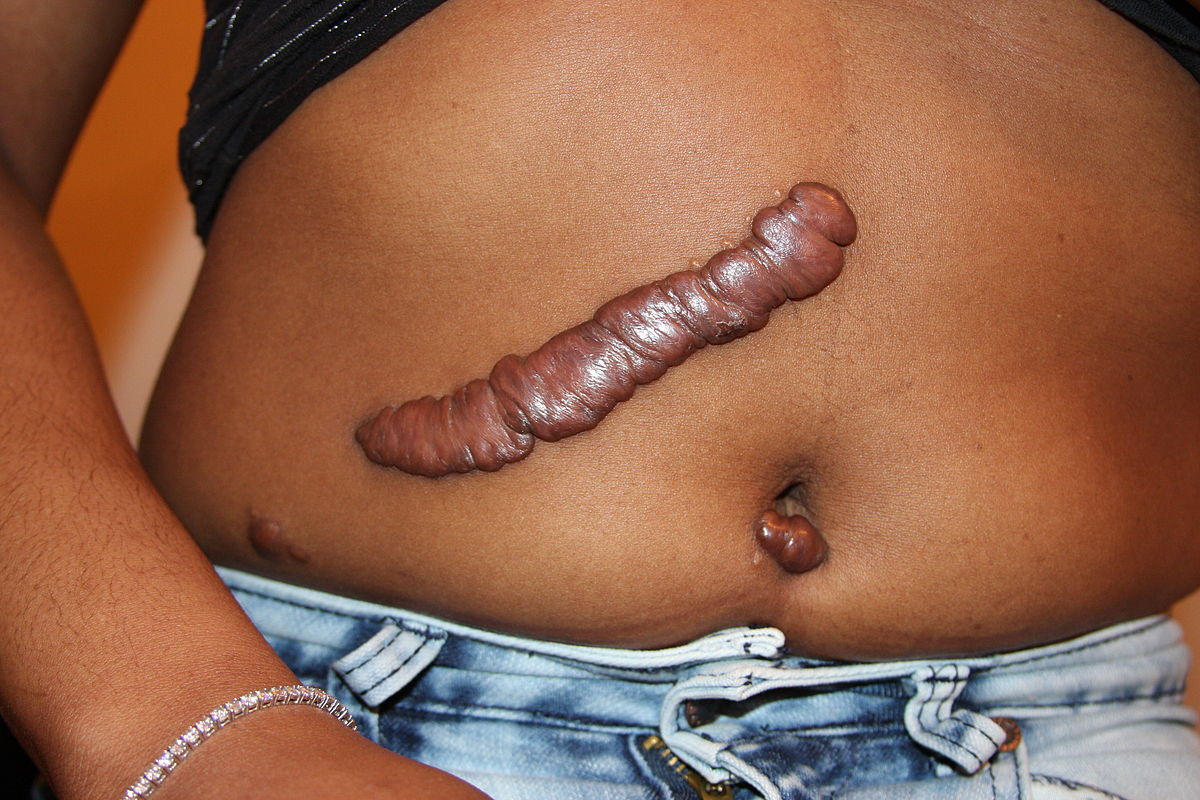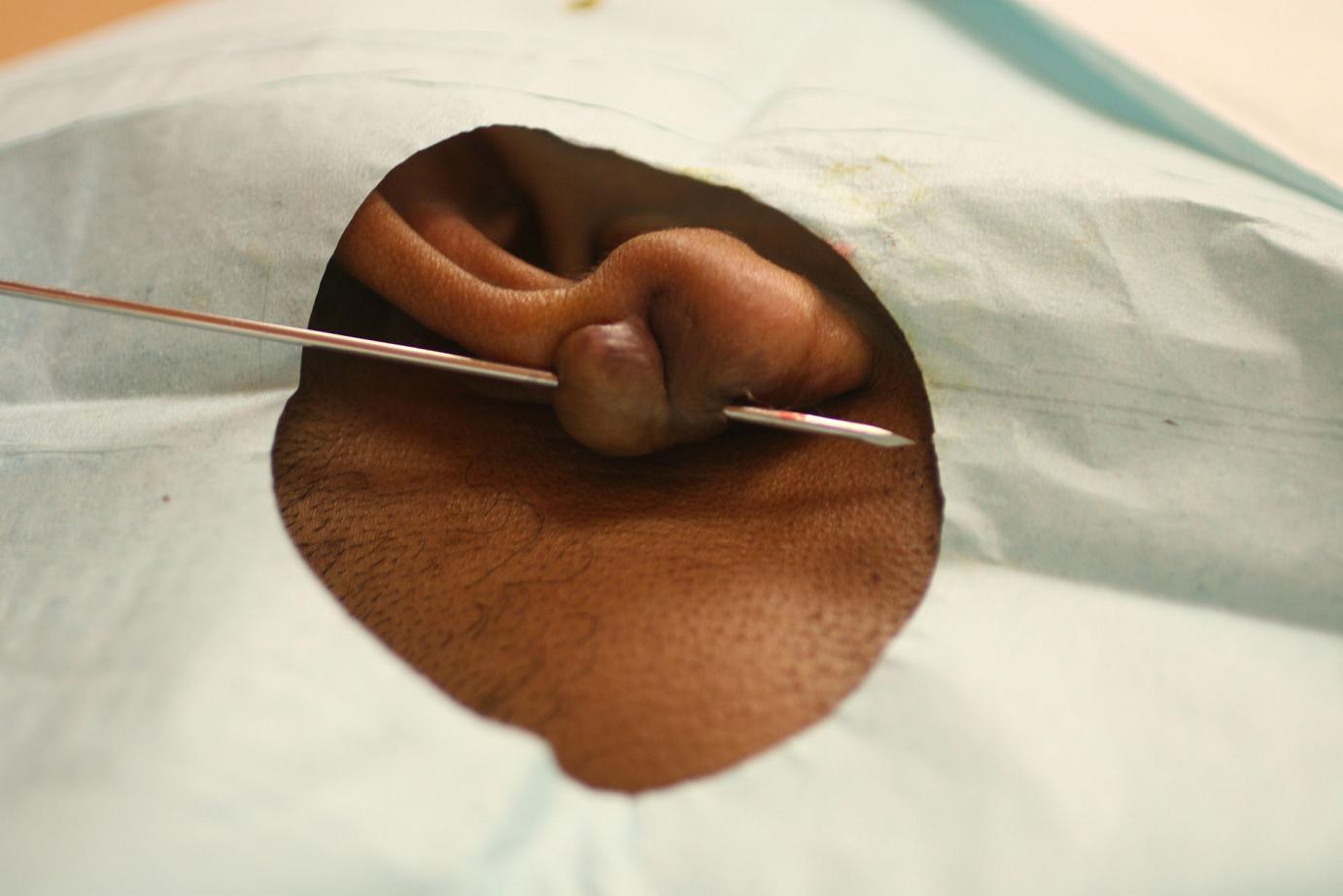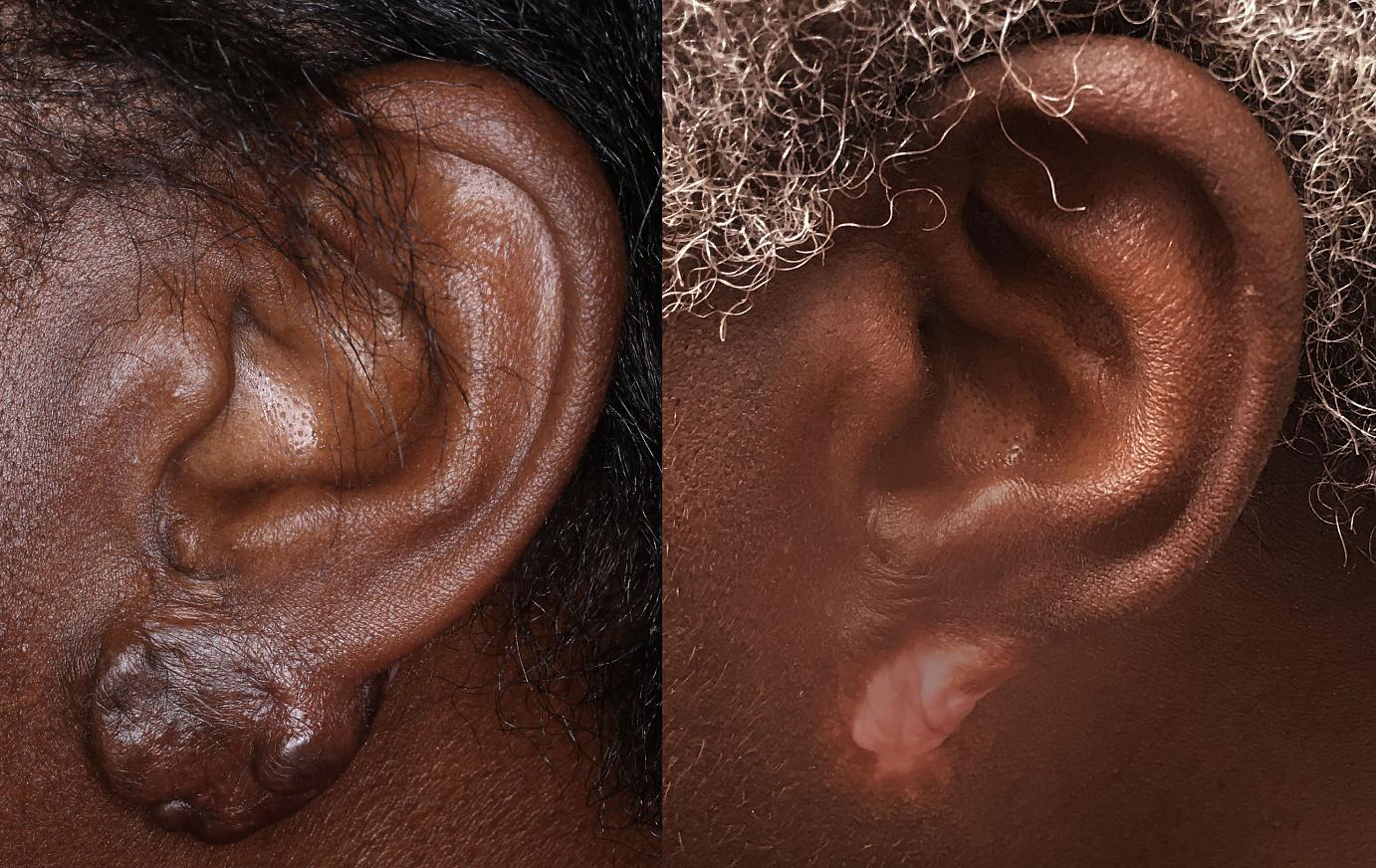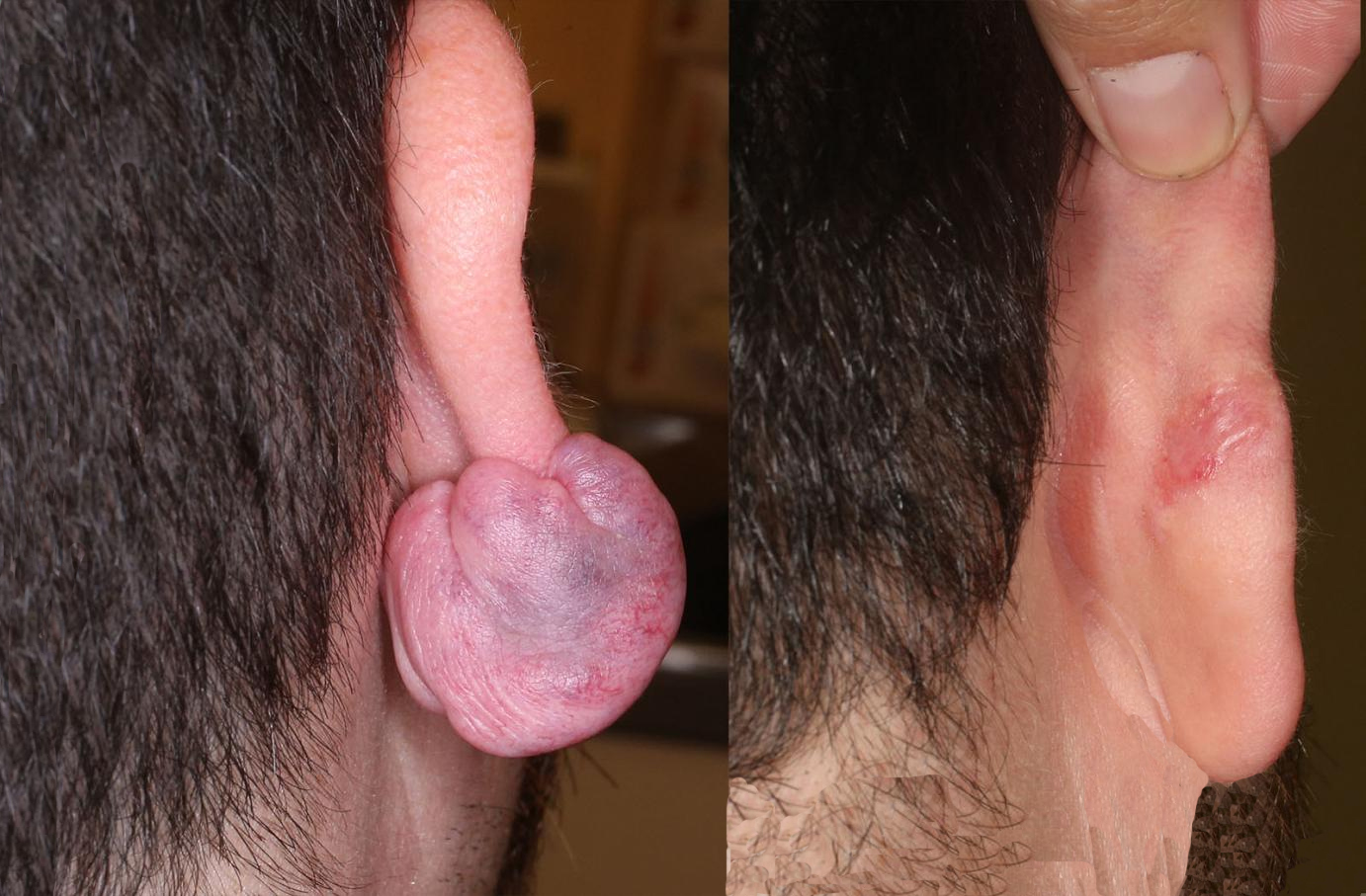Keloids Treatment
Treating Keloids with Cryoshape
Many physicians have performed surgical removal of keloids over the years; however, the likelihood for keloids to recur in surgically treated areas is extremely high and it is expected that any new keloid that forms is much bigger than the original one. If a keloid responds very well to corticosteroids but does not entirely flatten, surgery may be attempted if desired by the patient. Steroid injections must be performed at the time of surgery and every 2 weeks thereafter to prevent keloid formation at the site of surgical trauma. Usually, 3 injections after surgery are required to minimize the risk of keloid formation.
Keloids that do not respond to corticosteroids or are too big for meaningful injection may benefit from excision with subsequent radiation. If this is the case, we will refer you to a specialist that offers both treatments.




